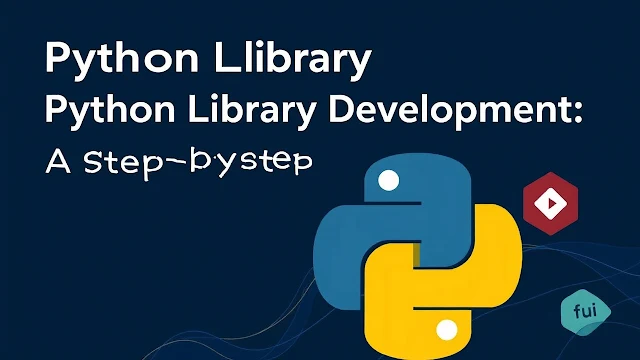Recommended Posts
- Get link
- X
- Other Apps
Developing a Python library is a great way to increase code reusability and modularize specific functionalities for easy use in other projects. Here's a detailed guide to the steps involved in developing a Python library.
1. Planning and Design
- Define Goals: Clearly define the problem the library aims to solve or the functionality it will provide.
- Feature List: Create a detailed list of features the library will offer. Design each feature to be independent and reusable.
- API Design: Design the library's API (Application Programming Interface). The API defines how users will interact with the library, so it's crucial to design an intuitive and easy-to-use API.
- Function and class names
- Parameters and return values
- Exception handling
- Dependency Analysis: Identify any external libraries the library depends on. Minimize dependencies and consider including them within the library if necessary.
- Documentation Plan: Plan how you will document the library's usage. (Docstrings, Sphinx, etc.)
2. Development Environment Setup
- Virtual Environment: Set up a virtual environment to maintain project-specific dependencies. (venv module or conda are recommended)
- Code Editor/IDE: Choose a code editor or IDE for writing and debugging Python code. (VS Code, PyCharm, etc.)
- Version Control: Use a version control system like Git to track and manage code changes.
3. Code Writing
- Module Structure: Organize the library into multiple modules. Each module should be responsible for a specific functionality, minimizing dependencies between modules.
- Code Style: Follow a Python code style guide like PEP 8. Consistent code style improves readability and maintainability.
- Write Docstrings: Write docstrings for each function, class, and module to explain how to use them. Docstrings can be accessed through the help() function or documentation generation tools.
- Exception Handling: Implement thorough exception handling to prevent the script from crashing due to unexpected errors.
- Write Test Code: Write test code for each feature to verify the code's correctness. (pytest, unittest, etc.)
4. Testing
- Unit Testing: Perform unit tests for each function and class to ensure individual features work correctly.
- Integration Testing: Test the interaction between multiple modules to ensure the entire system works correctly.
- Code Coverage: Measure how much of the code is covered by the test code. High code coverage helps increase code reliability.
- Test Automation: Automate testing so that tests are automatically run whenever the code changes.
5. Documentation
- API Documentation: Write documentation explaining the library's API. Tools like Sphinx can automatically generate API documentation.
- User Guide: Write a user guide explaining how to use the library. Provide detailed explanations with example code.
- Tutorials: Create tutorials that explain how to use the library's main features step-by-step.
6. Packaging and Distribution
- Write setup.py: Create a setup.py file that defines the library's metadata (name, version, description, dependencies, etc.).
- Build Package: Build the library into a package using the setup.py file. (python setup.py sdist bdist_wheel)
- Distribute on PyPI: Distribute the library on PyPI (Python Package Index). (twine upload dist/*)
7. Maintenance
- Bug Fixes: Fix bugs discovered through user feedback.
- Feature Additions: Add new features based on user requests.
- Documentation Updates: Update the documentation as the code changes.
- Dependency Management: Check for updates to dependency libraries and update the library if necessary.
Useful Tools and Libraries
- pytest: Testing framework
- unittest: Python built-in testing framework
- Sphinx: Documentation generation tool
- flake8: Code style checker
- mypy: Static type checker
- tox: Test execution tool in various Python environments
Example: Simple Calculator Library
# calculator.py
def add(x, y):
"""Adds two numbers."""
return x + y
def subtract(x, y):
"""Subtracts two numbers."""
return x - y
def multiply(x, y):
"""Multiplies two numbers."""
return x * y
def divide(x, y):
"""Divides two numbers."""
if y == 0:
raise ValueError("Cannot divide by zero.")
return x / y
setup.py file:
from setuptools import setup, find_packages
setup(
name='calculator',
version='0.1.0',
description='A simple calculator library',
author='Your Name',
author_email='[email protected]',
packages=find_packages(),
install_requires=[],
)

Comments
Post a Comment